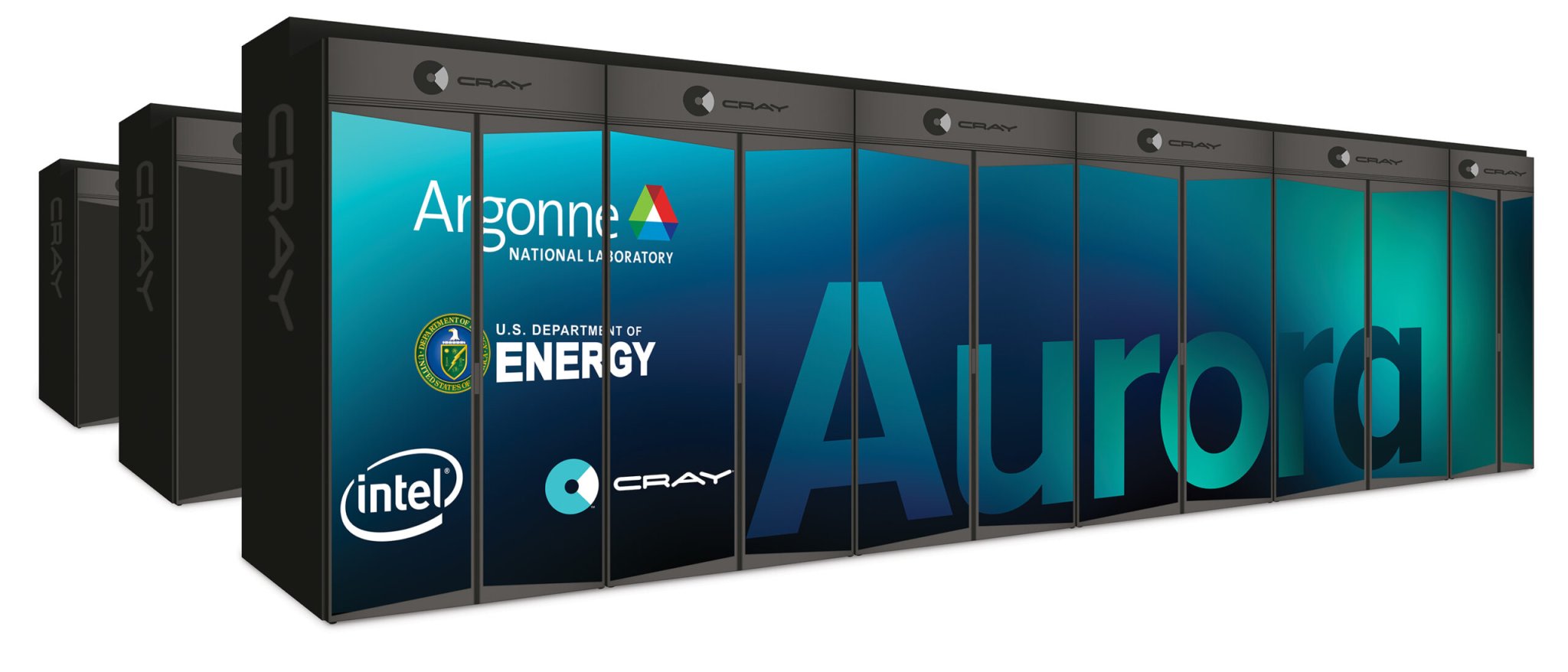

A government laboratory in Illinois will receive the fastest supercomputer in the United States in 2021, and it will be the first to hit what’s called exascale-level processing. The mammoth machine, called Aurora, will live at Argonne National Laboratory, and will be able to accomplish tasks like simulating complex systems, running artificial intelligence, and conducting materials-science research.
So what’s the point of a supercomputer? Experiments like crash-testing a car are expensive, complicated, and sometimes dangerous. A supercomputer simulation, however, allows researchers to carry out those tests virtually, and track and change countless variables as they play out. Some supercomputers even simulate nuclear blasts, which is best done virtually, and not in the real world.
Then there’s energy research: researchers could use Aurora to test the design of a wind turbine blade. Instead of building real blades with multiple variations and seeing how they perform, a supercomputer lets you simulate that experiment, which is much faster and a whole lot cheaper. Or, consider climate research. “You cannot put the world in a bottle in a laboratory, and see what happens if we do this, that, or the other thing with our energy policy,” says Steve Scott, the chief technical officer at Cray, Inc, one of the companies building Aurora.
Think about powerful supercomputers as a way to virtually put the world in a digital bottle. Here’s what else to know about Aurora, by the numbers.
Number one
In 2021, when Aurora comes online, expect it to be the top machine domestically. “It’s targeted to be the fastest in the United States when it’s built,” says Alan Gara, a fellow at Intel, which is also working on the new machine. Or course, the US is not the only country investing in supercomputers. Right now, the third-fastest machine is in China, and as recently as November of 2017, the two fastest supercomputers were both Chinese, followed by Switzerland and Japan. “There’s a little bit of a race, and for good reason—these have become for tools for nations to compete in some ways,” Gara says. In brief, if Aurora is fastest in the world at some point, it’s safe to assume it won’t hold that spot perpetually.
A quintillion operations per second
Aurora will be able carry out a quintillion operations each second—a billion billion. Written out, that number looks like this: 1,000,000,000,000,000,000. In the realm of supercomputers and even some regular computer chips, performance is measured in FLOPS: floating point operations per second. Those operations are the complex math equations—adding or multiplying two long numbers together—that allow computers to carry out the problem at hand, like rendering graphics on a screen or running a complex simulation.
That quintillion operations per second capability is what makes Aurora an exaflop machine, and that means it will be able to do 1,000,000,000,000,000,000 hard math problems every second.
The top supercomputers right now are measured petaflops. A sprawling machine called Summit, at the Oak Ridge National Laboratory, can hit a peak of 200 petaflops—Aurora should be five times as powerful. Wind back the clock to the late 90s, and supercomputers clocked in at a teraflop. (Historically, chips and transistors have become smaller and faster.)
“The fastest supercomputers on the planet are about 200 petaflops, so this is on the order of five to tens faster,” says Peter Ungaro, president and CEO of Cray. “It is a massive jump in performance and capability in a very short time.”
A billion laptops
If you assume a typical laptop can carry out a billion operations per second, Aurora is the equivalent of a billion laptops all connected together. “That’s a phenomenal number,” Gara, of Intel, says. Of course, Aurora will run better than a billion laptops all strung together would, because supercomputers must also be wired in smart ways so that the components are interconnected efficiently, not to mention other practical issues like making sure the hardware is liquid-cooled. “That’s really what differentiates a supercomputer from just a pile of a billion laptops,” he says.
For another point of reference, the Xbox One X is currently the fastest gaming console on the market. It checks in around 6 teraflops.
More than 200 cabinets
Supercomputers aren’t one massive, singular machine sitting in the middle of an empty room. Instead, their hardware is in cabinets. Aurora will need more than 200 of them, and according to Cray, each cabinet is about 4 feet wide, over 5 feet deep, and over 7 feet tall. Since the cabinets need some space between them, the total area of the system will need to be at least 6,400 square feet. That means that at a minimum, the Aurora computer will take up more space than a basketball court.
Each cabinet will get hot, but Cray says that thanks to liquid cooling, they could keep each cabinet chilly enough to run with a quarter megawatt of power.

200 gigabits
Since the computing nodes within each cabinet and the cabinets themselves need to be connected to each other, switches and copper and fiber-optic cabling will network it all. Each cabinet has multiple switches, and each switch contains 64 ports. When the data is flowing from switch to switch, it can travel at a speed of 200 gigabits per second. Picture a fiber-optic cable stretching from a switch on one cabinet to another cabinet, and the data can move at a speed of 200,000 megabits per second. (For comparison, Netflix says you’ll need an internet connect of 5 Mbps to stream HD films, or 25 for 4K.)
And each node is connected by just three “hops” or less from switch to switch, says Scott, of Cray.
Ultimately, all this talk about teraflops, petaflops, and exaflops are benchmarks that computer scientists use to describe a machine’s capabilities. “These are just arbitrary milestones,” Scott says. “The challenge, of course, is just continuing to push the frontier.”
